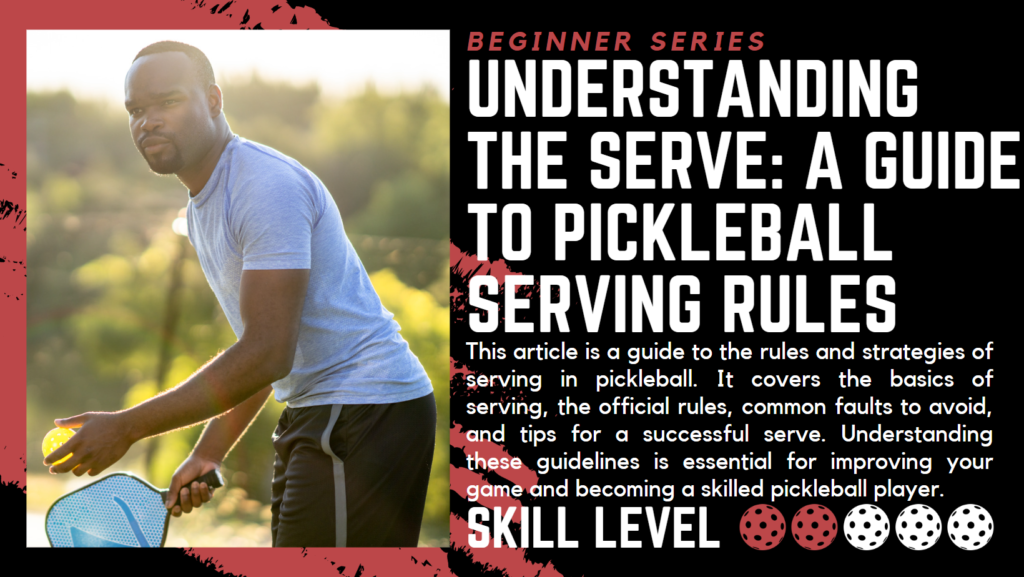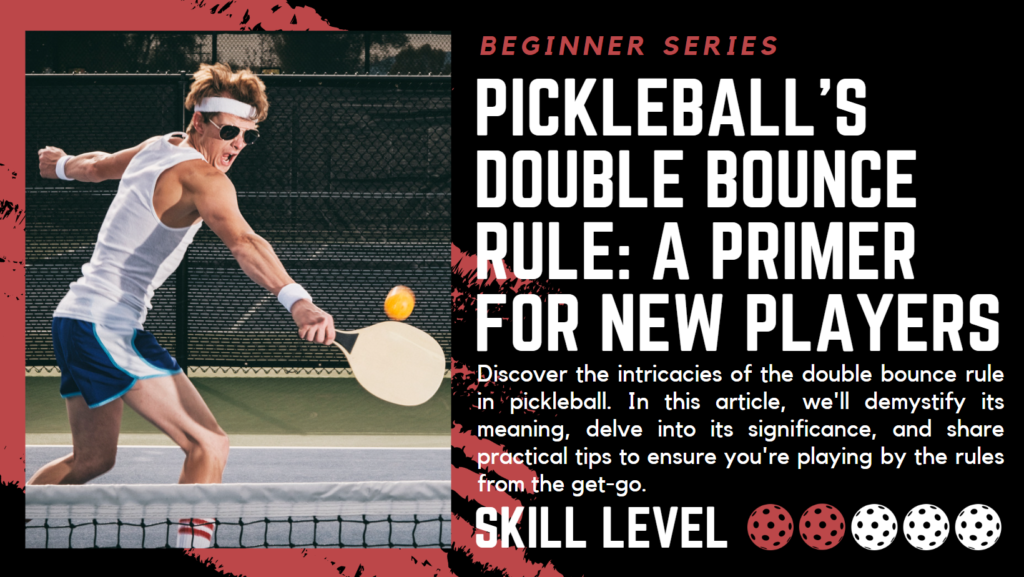
Understanding the Serve: A Guide to Pickleball Serving Rules
This article is a guide to the rules and strategies of serving in pickleball. It covers the basics of serving, the official rules, common faults to avoid, and tips for a successful serve. Understanding these guidelines is essential for improving your game and becoming a skilled pickleball player.
Pickleball, an exciting sport that blends components of tennis, badminton, and table tennis, necessitates accuracy, tactical planning, and a thorough comprehension of its regulations. The serve, a pivotal element of the game, not only kick-starts the match but also establishes the rhythm for the ensuing rally. This article is designed to offer an exhaustive guide to the rules of serving in pickleball, as stipulated in the USA PICKLEBALL Official Rulebook 2023, assisting you in perfecting this vital aspect of the sport.
Understanding the Basics of Serving in Pickleball
In pickleball, the serve is the action that starts each point. Mastering the serve can give you an advantage right from the start, putting your opponent on the defensive. The server must serve diagonally, aiming for the opposite side of the court on the other side of the net. The ball should be struck using an underhand swing, ensuring that the point of contact with the ball is beneath the waist level. The server must also keep at least one foot behind the baseline during the serve.
The Rules of Serving in Pickleball
According to the USA Pickleball Association, the rules of serving in pickleball are designed to ensure fair play. A legal serve begins with the server standing behind the baseline, hitting the ball with an underhand motion so that the paddle, at the point of contact, does not rise above the wrist. The ball must be served diagonally to the receiver’s service court.
In both singles and doubles play, the server starts from the right-hand court. If the server wins the point, they move to the left-hand court to serve, and this alternation continues. In doubles, each player serves before the serve passes to the opposing team, with one exception: at the start of each new game, the first serving team only gets one opportunity to serve before the ball is handed over to the other side.
The Double Bounce Rule
In the 2023 version of the USA Pickleball Association rulebook, the double bounce rule is defined as follows: “After the ball is served, each side must make one groundstroke prior to volleying the ball”. Put simply, both the serving team and the receiving team are required to allow the ball to bounce once before returning it, for a total of two bounces. After these two bounces have occurred, the ball can be volleyed or played off the bounce. This is an important rule so if you would like to know more about it please click the image below.
Faults in Serving
Understanding serving faults is crucial to maintaining your serve and avoiding unnecessary loss of points. A fault can occur in several ways during the serve:
- Service Faults: If the server swings and misses the ball when trying to hit it, it’s a fault. If the served ball touches any part of the non-volley zone, including the line, before bouncing, it’s also a fault.
- Foot Faults: In pickleball, the server must ensure that at least one foot remains behind the baseline during the serve. This means that before the ball is struck, neither foot should cross or even touch the baseline. If this happens, it’s termed a foot fault. The other foot, however, is not restricted and can be placed anywhere, provided it doesn’t violate the baseline rule.
- Wrong Server or Receiver: If the wrong player serves or receives the serve, it’s a fault. In doubles play, players on each team must serve and receive in a specific order.
- Service Out of Turn: If a player serves out of turn, it’s a fault. The serve must always start from the right-hand court and alternate between the right and left courts.
- Missed Swing: When the server attempts to hit the ball but completely misses it.
- Non-Volley Zone Violation: If the served ball touches any part of the non-volley zone (including the line) before bouncing, it’s considered a fault.
- Foot Fault: When the server’s foot crosses or touches the baseline before striking the ball.
- Wrong Server or Receiver: If the wrong player serves or receives the serve according to the specific order in doubles play.
- Service Out of Turn: When a player serves out of turn, not following the right-hand court and alternate serving order.
- Ball Tossed or Released Incorrectly: If the ball is not tossed or released from the server’s hand in an upward direction without spin, it’s considered a fault.
- Paddle Contact Above the Wrist: If the paddle, at the point of contact with the ball, rises above the server’s wrist, it’s a fault.
Strategies for a Successful Serve
Mastering the serve involves more than just understanding the rules; it also requires strategy. A well-placed serve can catch your competition off guard giving you control of the rally. Practice varying your serve to keep your opponent guessing, and aim for the corners of the service court to maximize the distance your opponent has to cover.
Conclusion
Understanding the serving rules in pickleball is crucial to improving your game. Whether you’re a beginner or an experienced player, keeping these rules in mind during play can help you serve more effectively and avoid faults. Remember, the serve sets the tone for the rest of the point, so mastering it is key to becoming a successful pickleball player.
FAQs
Q: Can you serve overhand in pickleball
A: No, overhand serves are not allowed in pickleball. The serve must be hit with an underhand stroke, and the paddle, at the point of contact, must not be above the server’s wrist.
Q: Can the serve bounce before it’s returned?
A: Yes, the serve must bounce before it’s returned. This is known as the “two-bounce rule.” After the serve, the receiving side must let the ball bounce once before returning it, and then the serving side must also let it bounce once before returning it.
Q: Can you score if you’re not serving in pickleball?
A: No, only the serving side can score points in pickleball. If the receiving side wins the rally, they do not score a point but instead earn the right to serve.

